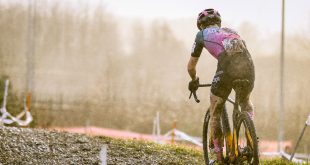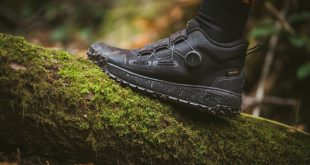With rich heritage and investment from some of the largest BMX names in the cycling industry, the company behind Bombtrack had some serious expertise already on side when the brand was created in 2011. Regardless of its almost exclusively BMX roots, Bombtrack chose to concentrate its efforts in other areas of the market with a range of gravel/CX, mountain and road bikes. The risky decision paid off however, and in 2018, the brand is cultivating a positive reputation from both riders and the media. We caught up with Bombtrack’s Manuel Schuerholz to find out more.
1. Why and when was the brand started?
We have actually been making bikes since 1996 but globally are more known for our BMX brands like Wethepeople BMX, Radio Bikes and others than we are for doing Bombtrack. It was 2011 when Richard and myself turned our passion into a serious plan: leaving the sphere of BMX for building a “big wheel” brand. We loved cycling so much that our fascination for BMX slowly faded away, while our curiosity to build and market the bikes we were riding and enjoying in our private time increased. Thanks to the success of our BMX brands we got a starting fund confirmed, did one bike in the first model year, then already four in the second year – and actually it grew yearly from there.
2. Does being a new brand allow you greater creative freedom?
Yes and no really. Of course the general direction can be decided by the brand when you start from scratch, but at the same time the creative freedom can still be limited as you need to ensure the existence of the brand too. With having the BMX background we were already used to creating “special interest” bikes, we had our production structure and a factory that believed in our vision and who were willing to support us. In addition to all this we weren’t the only ones who grew out of the 20inch wheel and we could hit the ground running using some of our existing distributors. All these facts actually helped to allow our creative freedom as you need a global playground to survive from doing bikes for a rather niche purpose.
3. Surely it also has its downsides, how do you instill confidence in customers?
As a brand we act quiet traditionally – this means our customers are our distributors. During the years we had a good amount of new ones coming on board, including some we hadn’t yet worked with during our „BMX-years“. We feel you can only instill confidence by having reliable sales and aftersales services, a well thought-out product and effective marketing with a steady brand presence.
4. What are you doing differently to other brands?
That’s difficult to say! I have only worked for our own bike brands and could only ever evaluate the possible differences from a distant perspective. For me, it often feels like we have more in common with bespoke frame builders than major brands that belong to a certain holding group. We work day and night, we live our passion and do far more than what’s finally ending up in our wallets. The identification with our brand can’t be deeper, and job- or company-hopping to reach a next salary grade never even enters our mind. Instead, we carefully choose what kind of bike to make, finding our place in a certain market segment or niche. In almost all cases our models are bikes we personally love to ride ourselves. This approach does mean we won’t be as mass-market oriented which works for us – but might not with other brands and their claims.
5. Bombtrack Bicycle has a big and diverse range for an emerging brand, how was this cultivated?
It grew and grew – as we often found ourselves not being able to ignore ideas for a certain type of bike. But I think our diverse range actually has more reasons than just a single one. Bombtrack has been shaped through collaborative work from the beginning; it was riders giving input and sometimes even befriending product designers that led to suggestions for certain bikes. Occasionally, some of our distributors would ask for a special kind of bike for their market. I could describe it best as there being a certain energy within the Bombtrack brand and our surrounding “family”: motivation is king. Our annual “Groundwork” event is possibly the best representation of how so many different bikes came to see the light of day. If you want to get an impression head over to our website and take a look at the documentaries we made about our recent Groundwork events, they show quite well how we got to there where we are today..
6. How have you found the market to be since the brand was started?
Due to our diversity and ethos we were always lucky to have certain models one step ahead of the trend – as soon as those trends developed we were often already there and could supply the market. For example we did the first specific fixed-gear criterium bike at a time when the common fixed crit races of the present only just popped up and people still raced on conventional track bikes. We did steel gravel bikes before the trend exploded recently, same with bikepacking models – we were already selling them by the time the bigger brands jumped on the trend. But we did not just “have” them, we developed them in close cooperation with our team riders that have been active in those spheres for years, so our bikes already had a story when the market became hungry for those models. Due to this background it transported a certain emotion and it therefore generated interest from the core scene – often a difficult task for a ‘faceless’ major company, even if they have big budgets to buy credibility. These are possibly all reasons why we stay relatively independent from the common market – if for example someone is really into bikepacking, they consider us such as part of maximum two or three other brands. That might not be the mass market, but it makes us feel good and we feel we can control it with the limited staff we have at Bombtrack.
7. How are dealers reacting to the bikes?
Our dealers can be considered as the more ‘dedicated’ type of dealer, who will invest into the brands they stock and generate content of their own. Those who have come on board haven’t stopped selling our bikes, so from that point I can say it is really satisfying. Since our first year sales increased in line with our expanding range of models – so obviously the reactions are positive!
8. How did the relationship with Lyon start? How are you both finding it so far?
The guys at Lyon approached us as they’d long been the UK distributor for Ortlieb, Tubus and a huge outdoor portfolio but wanted to expand their cycle portfolio and felt our bikes complemented what they currently offered very well. With our bikes in their range, they were able to kit someone out fully with all the equipment they made need to ride around the world, which worked well with their adventure inspired portfolio.
They came on board after we’d tried to serve the UK from central Europe. The reactions from the UK media was great – but we simply could not properly feed the market and its request. Our bikes where in magazines every now and then, on blogs.. people got curious but an interested shop could not get their hands on our bikes. Lyon looking after the UK market was therefore quite timely.
The guys from Lyon are very, very like-minded people. After they first got in touch we flew over to discuss business things. A visit to the Lake District the 2nd day blew us away the same amount as their company and its people did on the first. Their managing director spent the whole day and evening with us – which really fascinated us as he has actually more than 80 employees to direct. One of the aspects that clearly showed is them having the right “soul”.
As bikes were a new type of product for Lyon to distribute they initially tested the water on an agency basis. However, due to unprecedented demand for our bikes within mainland Europe our stock ran dry relatively early on in the season, so for MY18 they opted for a more traditional distributor model holding stock in their warehouse.
Since the early dealings with Lyon we felt a friendship between us, Chris and Nils (their brand managers) was formed. We spent some time together at events, and are always looking forward to meeting up again in future.
9. Where are the bikes made and how do you assure quality control?
The bikes are made in Taiwan where, due to our BMX roots, we have long-standing relationships with key factories. Quality Control is assured by dealing with the right partners over there as well as regular factory visits by both Harry Schmid (CEO) and Marcellus Putschli (product anager).
10. Where have the bikes been ridden so far? Can you gives us some examples of a Bombtrack model being put through its paces?
Wow, where do we start? We quite like putting our bikes through their paces by effectively being ‘underbiked’ at certain events. One of our team riders rode the TransAlp on our first generation Hook crossbike and we sent Joachim Rosenlund to ride the Highland 550 on a carbon 650b gravel bike. Other than that, we have had adventures from Istanbul to Tehran (documented as ‘A Journey Beyond’), the Baja Divide by Tales on Tyres plus a number of the classic endurance events (Transcontinental, Torino-Nice Rally, Tuscany Trail etc.).
The guys at Lyon also subject the bikes to their own tests, with Christine having bikepacked around Annapurna in Nepal and two more staff members taking a bit of time out of the business to bikepacking the length of South America trying to ride as little tarmac as possible.
11. What territories are you in? Do you have plans to expand further?
We have distributors in the UK and Ireland, France, Switzerland, Czech Republic & Slovakia whilst Germany, the Netherlands, France, Belgium, Scandinavia and the Baltics are taken care of by our in-house distributor “Traffic”. Further afield our distribution partners cover the US, Canada, Japan, New Zealand and Australia.
As we would like to keep making bikes that are innovative and not mass-market we have to think globally to make ends meet, so we are always on the lookout for additional distribution partners who would fit our ethos well.
 BikeBiz Bicycle and cycling retail news
BikeBiz Bicycle and cycling retail news




